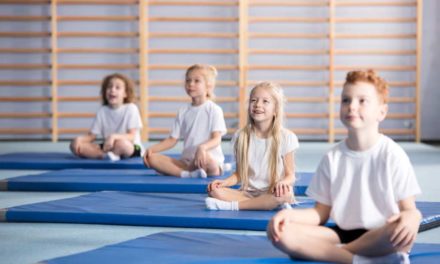I was left wheelchair bound in 2012 and so many people told me I could no longer participate in sports. I proved them wrong and continued my life the way it was before, just slightly adapted.
I teach Taekwondo to children aged 3-17 years. I specialise in teaching children with special needs and I believe it is vital that these children are treated with the same respect, dignity and care as the children without special needs.
We are supposed to live in a modern world of equality and acceptance; this should be no different in sporting activities and teaching.
Around 6% of English children are classed as having some form of disability, be it physical or mental and ranging from very mild to very severe (Papworth, 2013).
This makes the population of disabled youth larger and less of a minority group than it was originally thought to be. For this reason, it is important for this world to become a more supportive place for young people with special needs.
In the year 2000, Sports England produced a survey filled with various statistics regarding disabled youth and sport. It was estimated that 36% of young people with disabilities had no involvement in a regular sport. Since then, significant improvements have been made, largely as a result of the 2012 Paralympics.
Paralympians such as Eleanor Simmonds provide a shining example and source of inspiration. Eleanor Simmonds was born with achondroplasia, a condition that causes dwarfism. She became interested in swimming at 5 years old and by the age of 13, she was a Paralympic champion. This is due to her personal strength, as well as the support and motivation she received from her trainers. Children with disabilities really do have the ability to succeed in sports and given the right support from teachers and coaches can given these pupils the opportunity to do so.
I can draw from my own personal experience and say that many people are prejudiced towards disabled people and their involvement in sports. The best way to involve a disabled child in sports is to simply integrate them with able bodied children. Separating children based on ability may be the most practical solution, however it is not always in the best interest of these children.
Managing a child with a learning disability such as ADHD, Asperger’s or autism can be exceptionally difficult, especially when you are responsible for a full class of children. However, it is possible and it can be very rewarding.
When teaching pupils with learning difficulties, I often use my ‘line, square’ technique. It is a method I developed by observing the special needs children and focusing on the ways that help them to engage with other people.
In Taekwondo, we train using square mats. At the beginning of the lesson, I allocate each child a square, marking each with a line of colourful tape. I tell all the children, not just the children this is aimed at, to stay on the square where their tape is, unless instructed to move. They all then proceed to look at their tape and talk about the different colours they have been assigned.
It becomes something that can be used for warm up exercises and training sessions, for example – I could tell all children with red tape to do 20 star jumps, and the children with green tape to do 20 push ups. This normalises the method and it gives children with disorders such as ADHD the opportunity to grow accustomed to it. They will notice the tape, and their minds will not wander so easily.
This technique is best used when supported by positive encouragement. If a child is praised for staying on the square he/she is allocated, they are more likely to remember this and they will aim to do the same in the future.
Techniques like this are transferable, if you give a child a specific focus, and make it fun for them; they are more likely to respond positively to it. It is important not to make a disabled child feel like they are different to the other children.
They will already have some knowledge of their differences, but making a child feel like they belong somewhere is one of the most important things you can do as a sports teacher.
Dealing with a physically disabled student is similar to dealing with a child who has a learning disability; however the focus is more on adaptation and imagination, rather than inclusion and behavioural techniques.
Taekwondo is officially an able bodied sport; however with the correct teaching and support, it is possible for a disabled child to achieve great things in this sport. I won a gold medal in the English championships last year, in an able bodied competition.
If a child and his/her instructors have the correct dedication, perseverance and willpower, it is entirely possible to live an exceptional sporting life.
If you teach a child who is paralysed from the waist down, you focus on making hand movements and guards exceptional. With a blind child, you teach them through sound and touch. With a deaf child, you show them how to do things, rather than telling them. There is always a way to incorporate a child.
Together, we can end discrimination towards disabled people, and together we can make the future a brighter place for special needs kids.
Meg competed in the 2013 England Championships and has created a video of her experience there. She speaks of her hope to inspire other young people who have faced similar barriers. You can view the video here.










